At All Costs (21 page)

IMPERIAL WAR MUSEUM, LONDON - A 11173
A bomb landing near a freighter could blow a hole in its steel hull. The merchant ships were often surrounded and sometimes obscured by huge explosive splashes. Here, a freighter is near-missed; later she would be sunk by a direct hit.
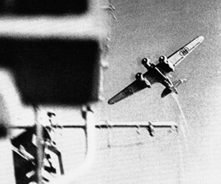
IMPERIAL WAR MUSEUM, LONDON - ADM 583
A twin-engine Ju 88 heavy bomber passes over a cruiser after having dropped its bombs on the convoy.

IMPERIAL WAR MUSEUM, LONDON - HU 47560
Near the Sicilian Narrows, Italian submarines waited; the
Axum
fired four torpedoes and hit two cruisers (sinking one) and the queen bee of the convoy, the tanker
Ohio
. This photo was taken at the moment of impact. At their battle stations on the port bridge wings of the
Santa Elisa
, Larsen and Dales got a face full of the torpedoed, flaming
Ohio
. “A tremendous black cloud rose on our port beam,” said Dales. “We could feel the heat. I saw men on deck and the black smoke swallowed them up.” This torpedo explosion blasted a 24-by-27-foot hole in the hull. The
Ohio
fell behind the convoy, but the smoldering tanker resumed steaming toward Malta, ever so slowly.
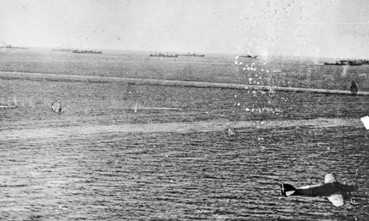
IMPERIAL WAR MUSEUM, LONDON - HU 43450
In this enemy photograph of the convoy under attack, the
Santa Elisa
is seen in the center, guns blazing, as an Italian SM.79 torpedo bomber keeps its distance.
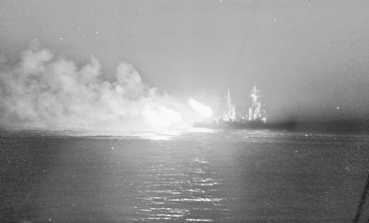
IMPERIAL WAR MUSEUM, LONDON - A 11247
Nighttime E-boat ambushes shattered sleepless sailors’ nerves. Spooked gunners fired into the blackness. The loader of Lonnie Dales’ Oerlikon was shot through the neck and killed by an E-boat machine gun; Dales loaded the gun himself and blew up the E-boat. But a second E-boat put a torpedo into the
Santa Elisa
.
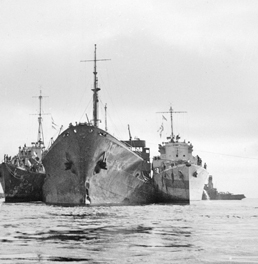
IMPERIAL WAR MUSEUM, LONDON - GM 1505
After the
Santa Elisa
was torpedoed and dive-bombed and went down in flames, Larsen, Dales, and the rest of the crew were picked up by the destroyer
Penn
. Meanwhile, the
Ohio
was bombed and repeatedly near-missed; she lost her engines and rudder, and began slowly sinking. Two shot-down dive-bombers crashed on her decks. Captain Mason ordered her crew to the lifeboats. Too heavy to tow, she was sandwiched by the
Penn
and destroyer
Bramham
, with
Penn
on
Ohio’s
port side, which kept her afloat.
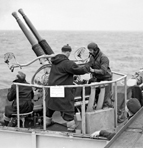
IMPERIAL WAR MUSEUM, LONDON - A19749
Larsen boarded the
Ohio
in the middle of the night. Joined by Dales, they repaired the 40-millimeter Bofors single-barrel antiaircraft gun on the stern. A twin-barrel Bofors is pictured here.
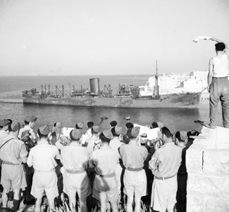
IMPERIAL WAR MUSEUM, LONDON - GM 1429
While the
Ohio
was being nudged along by the destroyers, four of the thirteen freighters reached Malta’s port city of Valletta, greeted by bands and cheered by hungry Maltese lining the ancient battlements around the harbor. The other nine freighters were sunk. With each ship carrying about 100,000 cans of aviation fuel, many men died in flames.
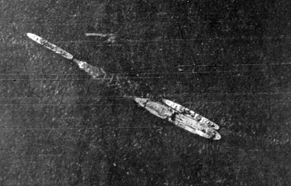
IMPERIAL WAR MUSEUM, LONDON - C 3190
The attacks at sea continued. For two days, a handful of volunteers manned the
Ohio
as she was dragged toward Malta at 4 knots.
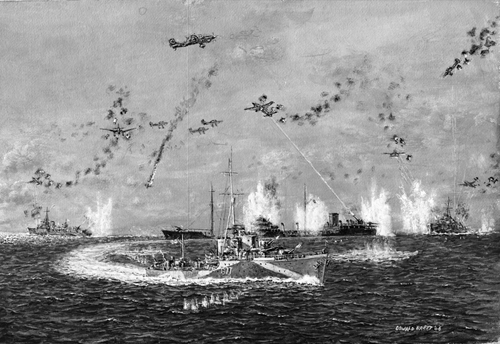
COPYRIGHT © OSWALD BRETT
When the swarms of enemy aircraft appeared, the destroyers released their lines and moved away from the leaking, explosive tanker. The Italian Regia Aeronautica sent its best Stuka pilots after the
Ohio
. Larsen and Dales stayed at the Bofors on the stern, and fought off the dive-bombers. “I believe it is the duty of every man to act as though the fate of the world depends on them,” the U.S. admiral Rickover would say. “Surely no one man can do it all. But one man can make a difference.”
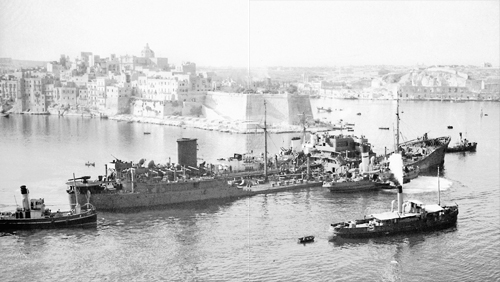
IMPERIAL WAR MUSEUM, LONDON - GM 1480
“When we entered Valletta Harbor, we were saluted like a victorious Navy ship,” said Larsen. “Crowds of people were singin’ and shoutin’ and screamin’ and playin’ bands, and it was quite a thrill comin’ in. I was sittin’ up on top of the Bofors, with Lonnie and some of the volunteers.”